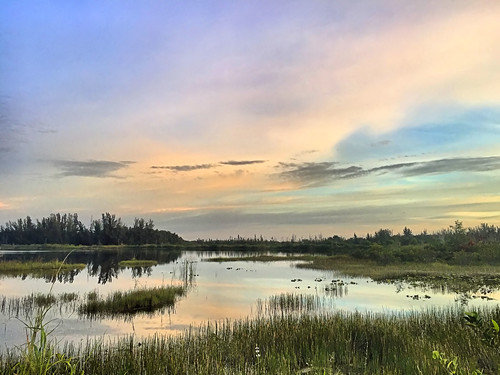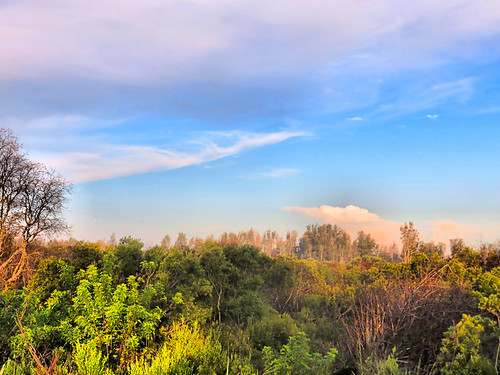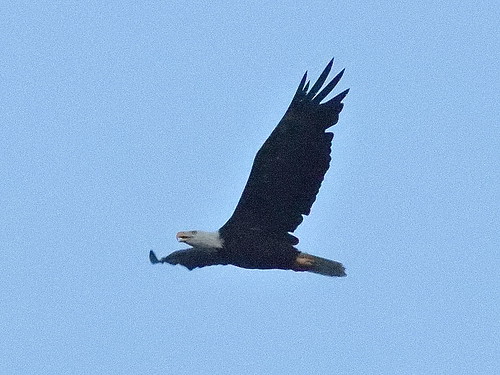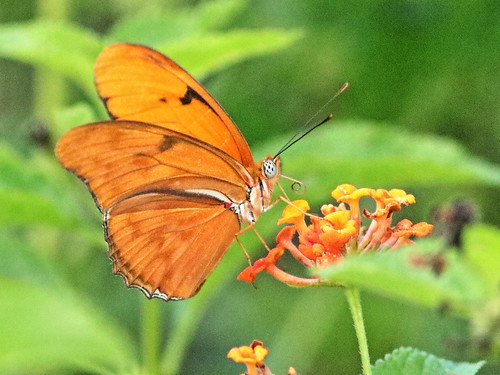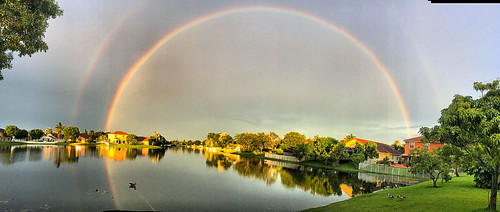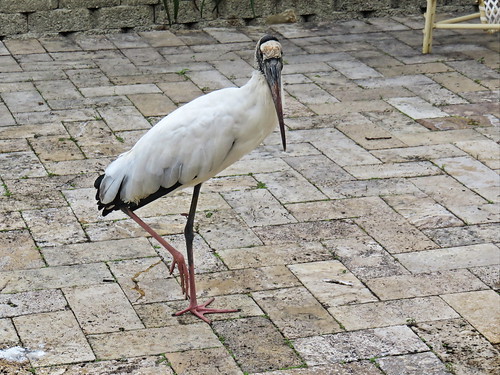
The recent visitor was an immature bird, as evidenced by the light yellowish or bone color of its bill. By the time they are three years old, adults have developed black bills. It was probably a second-year bird, as those which hatched out this year would retain some feathers on their heads and their bills would be brighter yellow. It walked along the lake shore just off our patio:

In typical fashion it stirred the water with its pink foot to frighten fish into its waiting open jaws:
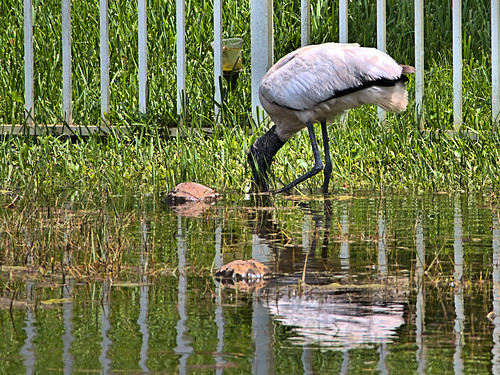
A Tricolored Heron scurried about as it fished along the lake:
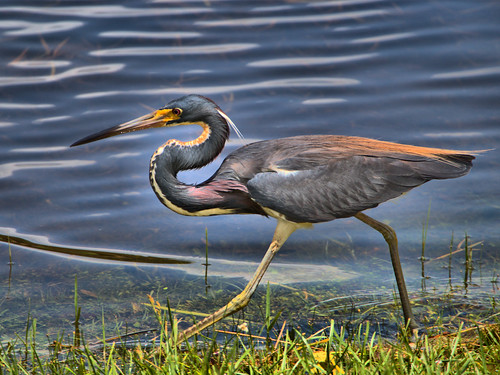
Unlike the stork, which is a patient tactile feeder who waits for the prey to approach its jaws, the heron uses its keen eyesight to spot and pursue anything edible. It caught a small fish along with a dead leaf and carried both up onto our lawn. This prevented the fish from escaping into the water as the heron used its tongue to dislodge the vegetable matter:

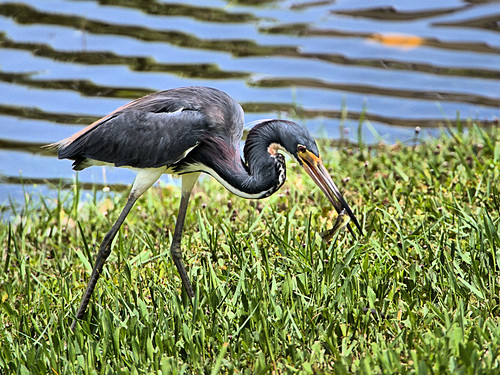
The heron joined the stork in a quiet corner of the lake where floating coconuts had accumulated. (Some have sprouted into trees which will eventually be removed by the landscapers.) We often see such associations between sight and tactile feeders, as this can be mutually beneficial. The heron helps the stork find schools of fish. The stork then scatters them out into open water. Note the maturing mangoes on a neighbor's tree:

The stork extends one wing while stirring the water with the opposite foot. I used to think they were doing this to cut down on glare so that they could see the fish, but they don't catch by sight. Rather, the fish tend to collect in the shade of the wing, making them more likely to stray into the stork's waiting jaws:

A Great Egret fished nearby. The fence and red walls of a neighbor's house reflected nicely:

A Blue Jay roosted on our mango tree. Our fruit ripened much earlier this year:

We left the topmost mangoes to the wildlife. Egyptian Geese savored them:

Out in the local wetlands, mosquitoes descended in hordes. Among them was a very large species with a painful bite, the American Giant Mosquito (Psorophora ciliata), sometimes called Shaggy-legged Gallinipper or Feather-legged Gallinipper. Indeed, it has banded shaggy legs and looks like a wasp. It appears sometimes after a spell of heavy rain but is not known to carry any human diseases:
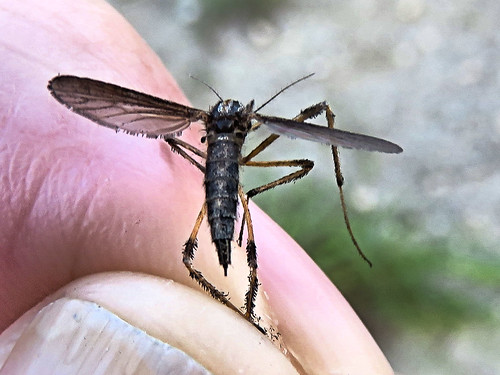
As usual, we go out early. Here is MaryLou up ahead of me with her flashlight, under the full Strawberry Moon:


Sunlight touched the Wet Prairie through morning haze, dust blown in from Africa:
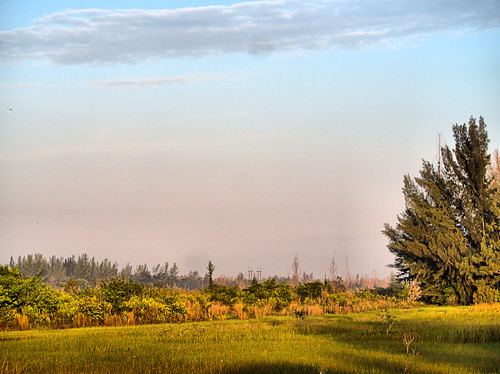
Back at my computer I discovered that one of my views revealed a distant deer:

Anti-solar rays opposite the sunrise, reflecting the Saharan dust, converged on the western horizon, creating a mirrored or false sunrise:
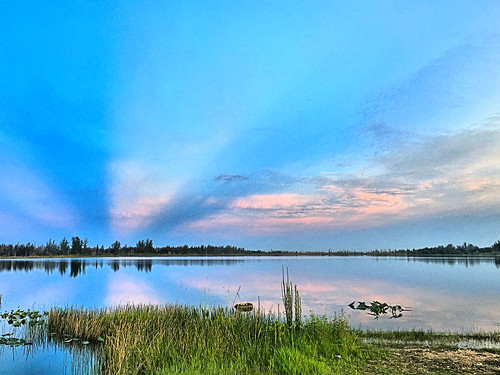
Recently cleared of debris left almost two years ago by Hurricane Irma, the levee trail was inviting:

A Marsh Rabbit appeared on the track:

Ahead, a female White-tailed Deer checked to see if it was safe to cross. I slowly raised my camera:

The doe led her half-grown fawn across the trail:

A buck, its growing antlers still in velvet, followed close behind:
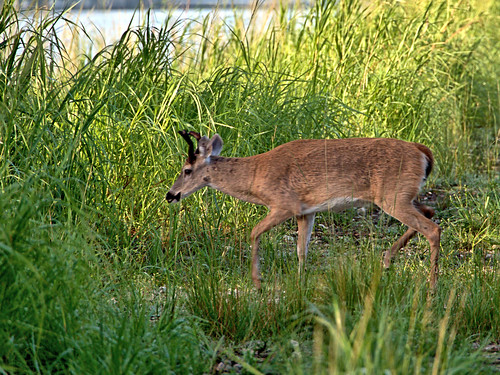
I knew where the deer were most likely headed, so I crept over to get an open shot. The buck spotted me first:
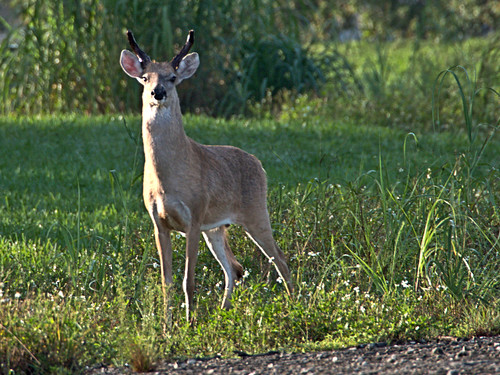
The fawn emerged from cover and trotted right past me:

Sensing danger, the doe raised her tail like a flag and then bounded after her offspring:

The buck followed, and their hoof-beats rattled on the gravel track:

A Mourning Dove basked in the sun:

Storm clouds gathered:
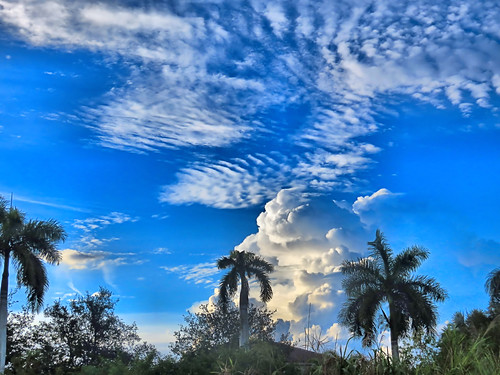
= = = = = = = = = = = = = = =
Linking to Misty's CAMERA CRITTERS,
Linking to Eileen's SATURDAY'S CRITTERS,
Linking to SKYWATCH FRIDAY by Yogi, Sylvia and Sandy
Linking to WEEKEND REFLECTIONS by James
Linking to BirdD'Pot by Anni
Linking to Our World Tuesday by Lady Fi
Linking to Wild Bird Wednesday by Stewart
Linking to Wordless Wednesday (on Tuesday) by NC Sue
Linking to ALL SEASONS by Jesh
Linking to Fences Around the World by Gosia
________________________________________________
Please visit the links to all these memes to see some excellent photos on display
________________________________________________


